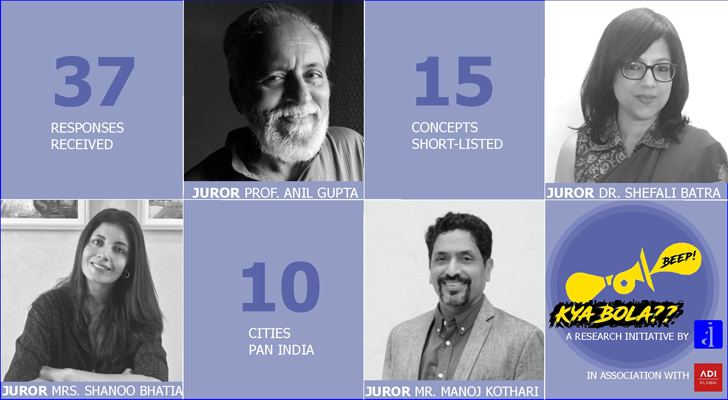IAnD Exclusive
#KyaBola
By Team IAnD
Read Time: 15 mins
 |
| . |
The #KyaBola research initiative concludes on a note of positivity with some extremely focussed and tested concepts coming into the limelight. It is now a leap of faith that this word reaches the stakeholders-that-be!
Today, when time is a closely monitored and commercialised commodity, getting people to invest their time in attempting to solve a social problem is commendable, to say the least. Even more worthy of mention are the efforts of the busy professionals, who constituted the jury. Each of the four members not only offered their expert opinions via succinct write-ups on the subject but have invested their resources into diligently studying every response and penning down their inferences on the same.
The #KyaBola research initiative by Team IAnD has concluded after an action-filled three weeks (17th Feb – 5th March 2020). Apart from a few pranksters and idlers, we’ve received 37 genuine responses from design students, design professionals, an automotive enthusiast, an architect, even a homemaker. This affirms the level of consciousness that is open to voicing itself.
Besides the above, Team IAnD have unearthed a few features published as far back as 2014, and 2016 that talk about dealing with the same problem. The most recent being in November 2019 in Dhaka (see pic). One study by two students of NMIMS, Mumbai talks about prototyping a ‘green horn’ that can be implemented as an add-on feature to the existing horn and works by transmitting visual and sound signal within a dedicated range. Another notable feature that deals with the advent of the car horn in 1649 aptly questions the evolution of the honk horn?
However, as always, an idea in silo remains an idea; but, in conjunction with support from the multitude, it can fructify into implementable action. May we hope for this action?
Jury Comments:
Whilst the jurors express pertinent thoughts on the solutions proposed, they seem to concur on the overall sentiment that
a) We need to implement “a combination of communication design and behavioural change” as Mrs. Shanoo Bhatia puts it, by addressing the reasons that instigate uncalled-for honking. Whilst this can be done by mobilising community sentiment on “Horn not okay” - Dr. Shefali Batra calls these “stimulus reminders” on one hand, on the other, “making the infrastructure WORTHY of less-horn habits” seems doable as Mr. Manoj Kothari cites the example of regulated crowd behaviour in India in many other situations like malls, multiplexes (where infrastructure improvement helped the behaviour change) etc.
b) Since honking is largely relatable to behavioural science, suggestions that have brought ‘treating and training’ the mind into focus refer to a lateral approach that can be pursued alongside other measures, according to Mrs. Shanoo Bhatia and Dr. Shefali Batra
c) With suggestions of using light in conjunction with the honk horn for aided expression, Mr. Kothari opines, “with the innovations in LED lights for even entry level vehicle, this could be a potential direction.”
d) Appreciating the Y-honk study, Mrs. Shanoo Bhatia opines that the approach to undesirable behaviours is best viewed through a human lens and that is what this route proposes for assessing both, the problem and the possible solutions. Adding on to this, Dr. Shefali Batra suggests that ideally the Y-honk should also monitor the pulse, BP, body temperature, GSR and other aspects we do on a lie detector as we gauge the emotional state of the person. Since it is focused on the driver this can be a good strategy if we know what the strategy is.
e) And the one proposed solution that Prof. Anil Gupta and all the others feel is extremely workable is BLEEP. With feedback reinforcement and self-regulation at its core, Mrs. Shanoo Bhatia sums it up saying, “If we manage to change behaviours through smart design, we have succeeded in demonstrating the power of mindful design.”
It is now time to wait and watch when this baton is going to be picked up to evoke positive change.
View all entries below:
- Mending an impatient, loud Indian!
- Design thinking the problem of honking on the Indian roads
- Is honking merely a way of communicating?!
- The menace called honking: drivers' mindset and attitude desperately need change!


No comments :
Post a Comment